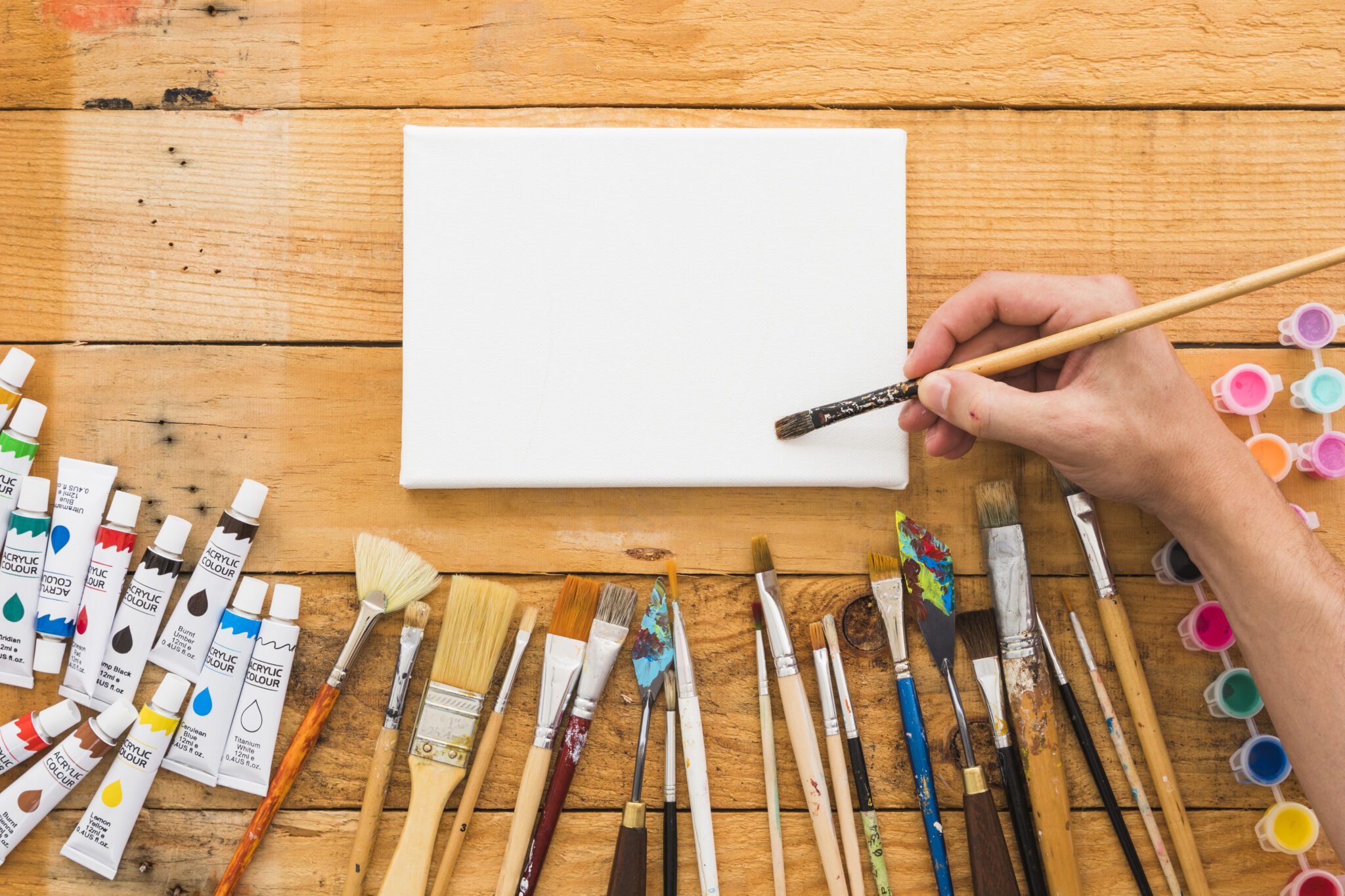The filbert brush is a versatile tool that combines the qualities of both flat and round brushes, making it an ideal choice for glazing techniques in acrylic painting. Its unique shape—characterized by a rounded, oval head—allows artists to create both soft edges and sharp lines, making it perfect for layering color and producing rich, translucent effects. In this guide, we will explore how to effectively use the filbert brush for glazing, focusing on techniques that will help elevate your acrylic artwork. Don’t forget to visit urartstudio.com for tools, tips, and resources to enhance your painting skills!
1. Understanding the Filbert Brush
The filbert brush features a flat, oval-shaped head with soft, rounded edges. This design allows for a variety of applications, including:
- Blending: The rounded edges are excellent for blending colors seamlessly.
- Softening Edges: The filbert brush can create soft transitions between colors, making it ideal for portrait painting and landscapes.
- Detailing and Glazing: Its versatility allows for both detailed work and broader strokes, making it perfect for layering techniques.
2. What is Glazing?
Glazing is a technique used in painting to create depth, luminosity, and richness through thin, transparent layers of color. When applied correctly, glazes can enhance the tonal range of a painting. The filbert brush is particularly well-suited for this technique.
Key Characteristics of Glazing:
- Transparency: The glaze should be thin enough that the underlying layers remain visible, allowing colors to interact and create new shades.
- Layering: A successful glaze is built through multiple layers rather than heavy applications all at once, which helps prevent the colors from becoming muddy.
3. Techniques for Glazing with the Filbert Brush
Here are essential techniques to master glazing with the filbert brush:
a. Preparing Your Paint
- Creating a Glaze: Mix your acrylic paint with a glazing medium or water to achieve a transparent consistency. The ideal mixture should still have pigment but be fluid enough to flow smoothly from the brush.
- Testing Transparency: Before applying the glaze to your painting, test it on a spare piece of canvas or paper to ensure you achieve the desired transparency.
b. Application Techniques
- Layering Colors: Start with a dried base layer. Load the filbert brush with your glaze and use gentle strokes to apply it over the underlying paint. Begin on a less visible part of the canvas to get comfortable with the amount of pressure needed.
- Pressing Lightly: For an even application, use light pressure to avoid disturbing the base layer. The filbert brush’s shape allows you to create both consistent coverage and soft transitions.
- Building Up Layers: Apply multiple layers of glaze, allowing each layer to dry before adding the next. This will create a rich depth of color without overwhelming previous layers. Aim for at least two to three layers to fully appreciate the glazing effect.
- Blending Colors: After applying a glaze, you can use the filbert brush to blend colors where they meet. Use a gentle back-and-forth or circular motion to create a smooth transition between colors.
c. Creating Depth and Luminosity
- Dark to Light: Begin with darker layers and gradually add lighter glazes. This approach helps create depth and dimension in your artworks, particularly in portrait and landscape painting.
- Use of Color Temperature: Incorporate warm or cool glazes strategically to evoke different moods. For instance, warm glazes can create a sunny effect, while cool glazes might enhance the feeling of distance or serenity.
4. Practical Tips for Successful Glazing
To ensure the best results when glazing with the filbert brush, consider these practical tips:
- Choose Quality Paints: Use high-quality acrylic paints that offer good transparency and vibrancy. This will help your glazes appear more luminous and effective.
- Keep the Brush Clean: Clean the filbert brush frequently to avoid mixing unwanted colors. A clean brush allows for more precise application and less muddying of colors.
- Experiment and Practice: Don’t hesitate to experiment with various glazing techniques and color combinations. The more you practice, the more comfortable you’ll become with achieving the desired effects.
5. Conclusion
Mastering glazing techniques with the filbert brush can significantly elevate your acrylic painting. With its unique shape and versatile application, the filbert brush allows you to create luminous layers, soft transitions, and rich depth. By employing the techniques outlined in this guide, you can effortlessly incorporate glazing into your works, enhancing the overall quality and visual appeal.
Be sure to explore our selection of filbert brushes and other essential art supplies available at urartstudio.com to support your creative journey!
Don’t forget to visit our online store at https://urartstudio.com/shop/ for a variety of art supplies and tools. Additionally, check out valuable painting tips at urartstudio.com/painting-tips/ and our step-by-step painting instructions at https://urartstudio.com/step-by-step-painting-instructions/ to further enhance your skills.
Keywords: filbert brush, glazing techniques, acrylic painting, layering, art supplies.
#FilbertBrush, #GlazingTechniques, #AcrylicPainting, #Layering, #ArtSupplies



Leave a Reply
You must be logged in to post a comment.